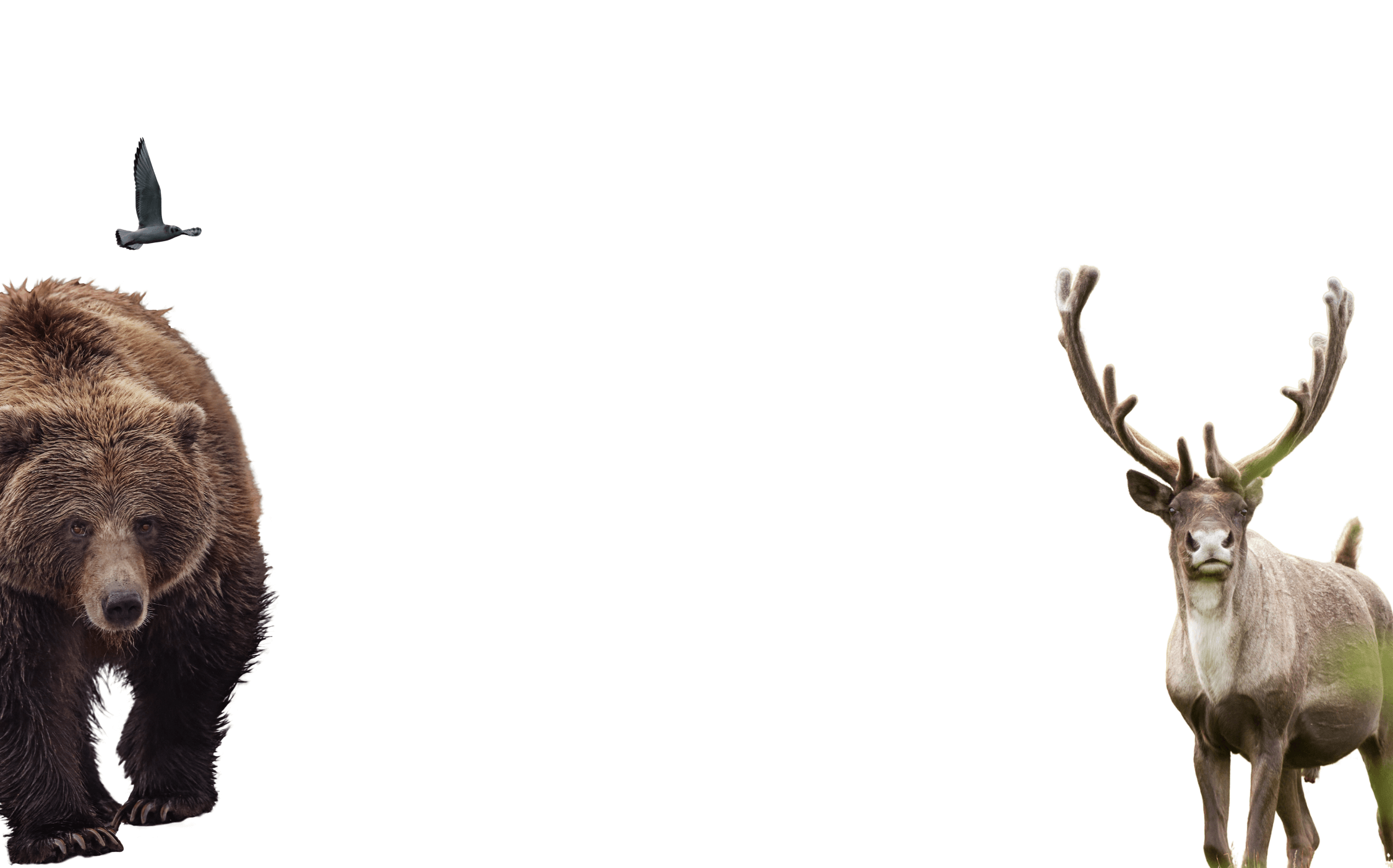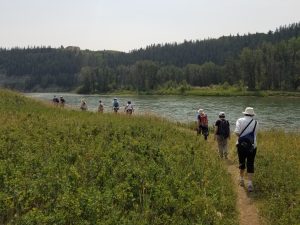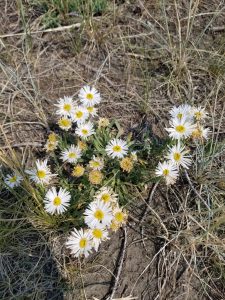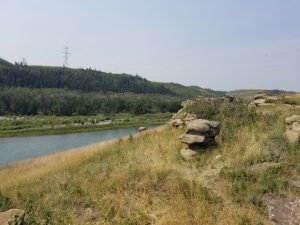
McKinnon Flats Nature Walk – July 20, 2024
July 24, 2024
- •
- •
- •
Text by Kennedy Halvorson
Photos by Ruiping Luo
“Is this a protected area?”
It’s a good question. Driving south down your average, non-descript Alberta range road, McKinnon Flats emerges out of nowhere. Seemingly endless cropland suddenly splits, carved into a lush river valley by the mighty Bow. The area is beautiful and relatively unknown; artist and adventure co-lead Kay Fleming grew up nearby and relates that it’s well-frequented by locals as a spot to hike, fish, float, and just generally relax. Saskatoon bushes also border the banks, and at this time of year, their berries are plentiful and ripe.
With ample snacks along the route, participants were led through cottonwood stands onto a prairie path. Researcher and reclamation biologist Justine Doll, the hike’s other lead, pointed out various native plants as the group wound its way up to a bluff of hoodoos.
Petals of wild bergamot, better known as bee balm, were distributed for sampling – their flavour minty, spicy, and refreshing all at once. Along with the leaves, they can be brewed into a lovely tea. Stems of yarrow were collected and passed around for smelling; their small, white umbrella of flowers sweet and soapy, a scent that apparently is unpleasant for biting insects. As a natural insect repellant, Justine spoke of tucking the plant in open pockets and behind her ears to ward off mosquitoes and flies during field seasons.
While native plants were aplenty, the area was not without its share of invasive species. Introduced during colonization, many garden escapees were likely first planted because of their natural benefits – Justine pointed to the yellow button-like flowers of common tansy, prized as an insecticide in Europe. In Alberta, it is classified as a noxious weed, as it outcompetes native species, disrupts ecosystem function, and is toxic to animals and humans. Eco-conscious gardeners seeking for the look and function of tansy would be better to plant native goldenrod species alongside yarrow. The added bonus? The pollinators love them.
Beetles, bee flies, and syrphid flies were soaking up the full sun at McKinnon Flats, easy to spot throughout the blooms. Based on their low abundance, the plus thirty-degree weather must’ve been as much of a challenge for the native bees and butterflies as it was for participants; frequent stops and water breaks were paramount on this adventure, and the caution well-worth the reward.
Justine and Kay led the participants to a breathtaking view. Backed by tall grasses and prickly pear cacti, hoodoo-lined cliffs overlooked the river valley, sparkling in the mid-day heat. Which prompted the question, is this a protected area? At the time, no one knew. AWA staff mused it could be a provincial recreation area, as anglers, swimmers, beachgoers, and other hikers were also all out enjoying the day, but the lack of Alberta Parks’ signage suggested not.
McKinnon Flats is public land, owned collectively by all who reside in Alberta. It’s a great example of why AWA advocates against the sale and privatization of public land; although it has no official designation as a protected area, it is rich in both biodiversity and recreation opportunities, providing a refuge for humans and wildlife alike.
Click here to see a video of some of the fun things we found!


